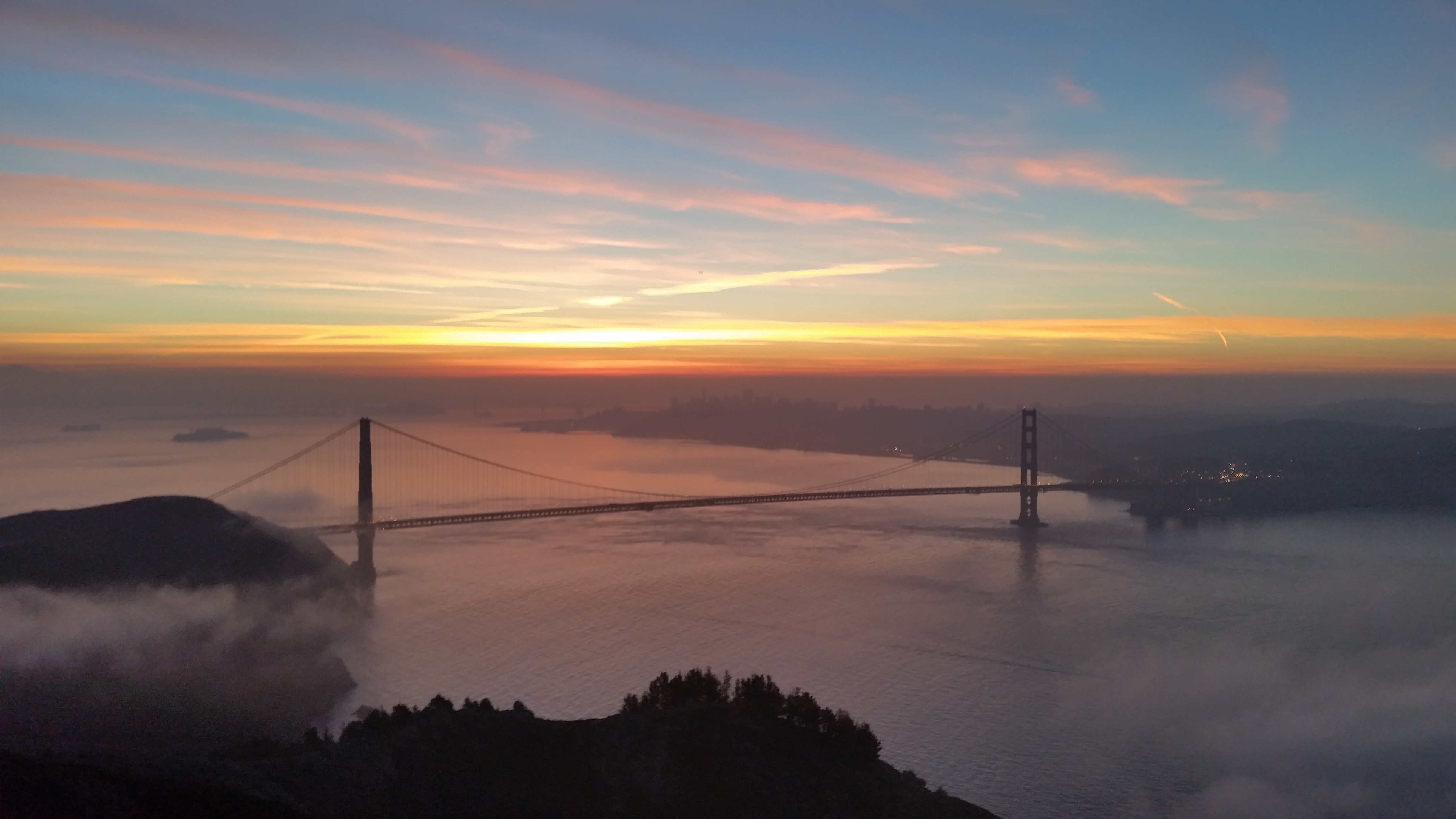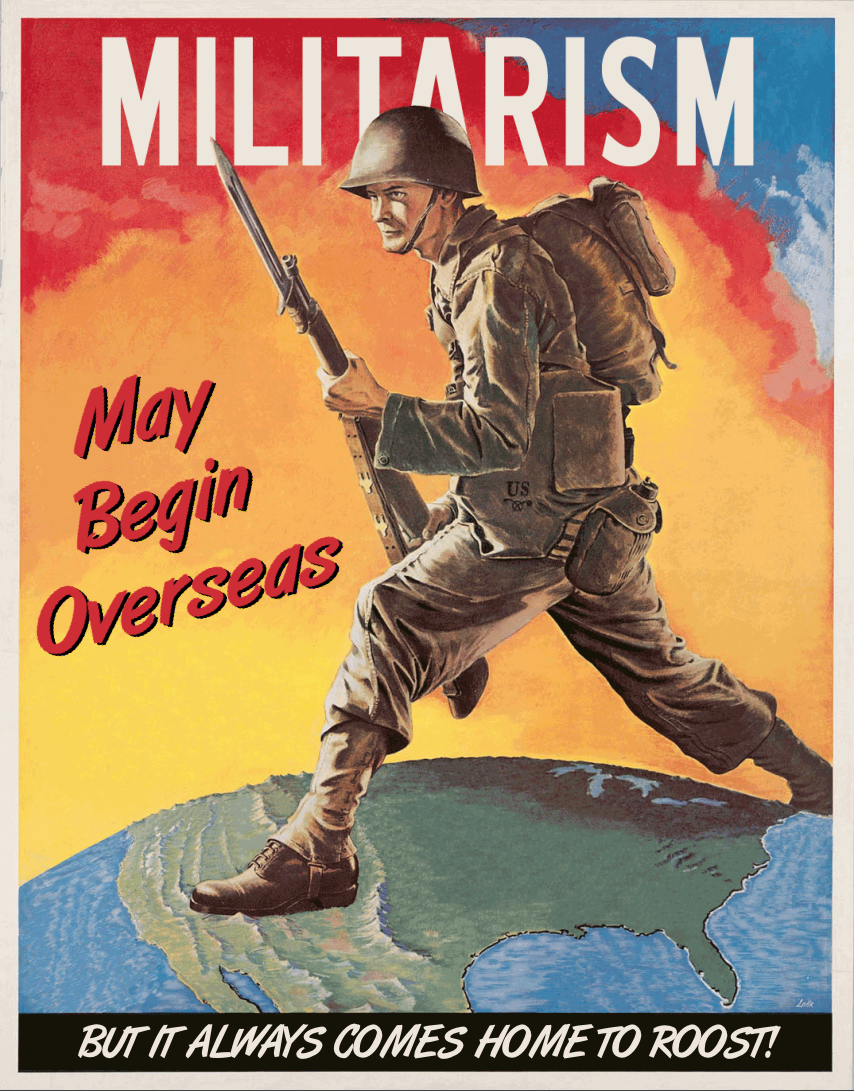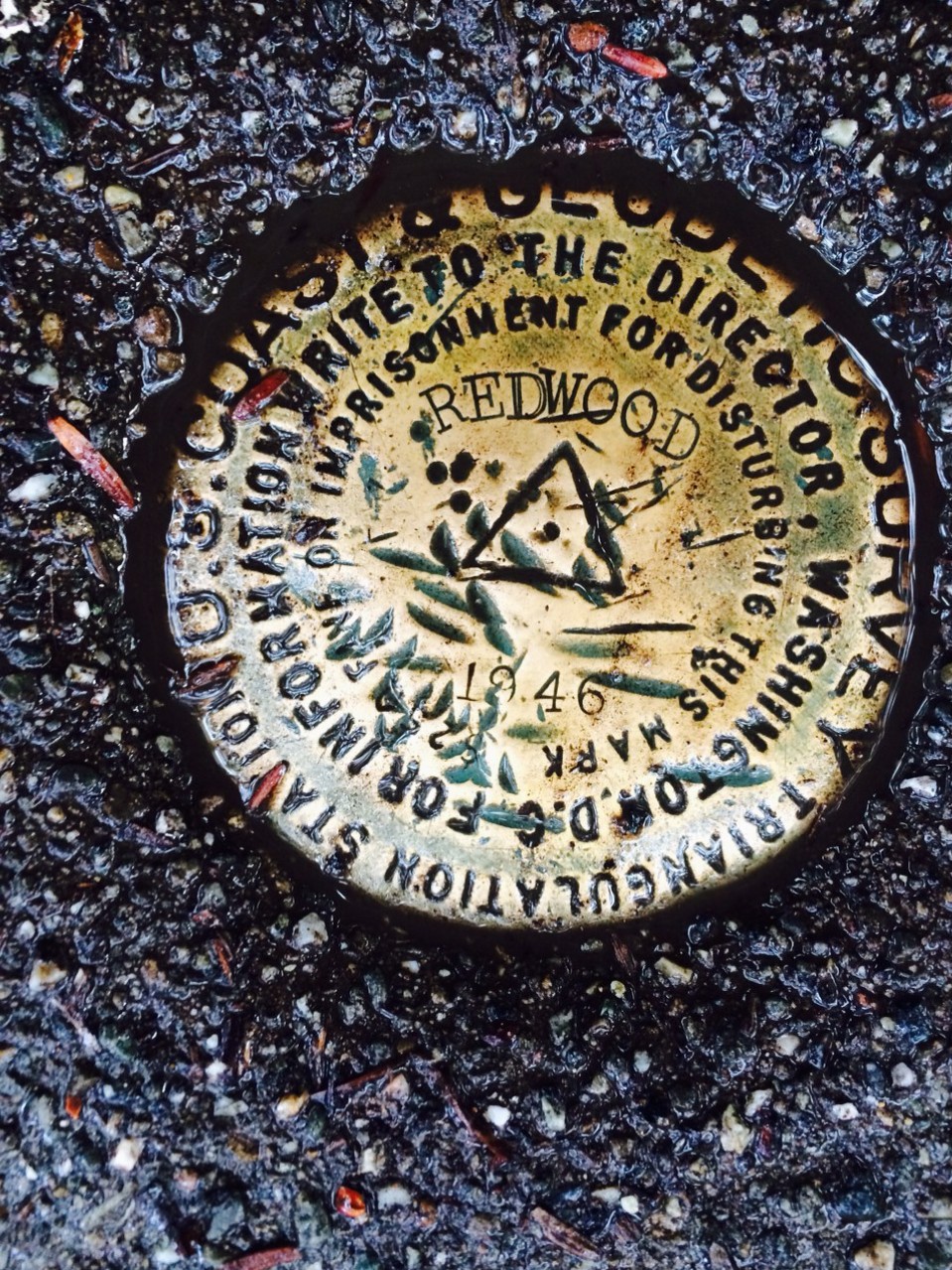WHAT I DID / WHAT I DO / HAVE A GOOD TIME
In September, I participated in different kinds of meetings with five Brigades on a two-week circuit ride. I joined for a full hack night where I could, in Birmingham and Atlanta. When I couldn’t visit a hack night, I sat with the core leadership team of each Brigade to chat in Nashville, Chattanooga, and Detroit. Code for America picked up the drinks and dinners. That’s our job – we are an aggregation of resources and we get people together to use them. A glamorous – vainglorious – description of my job would involve “convening” for “outcomes.” I think it really comes down to sharing our resources to help people have a productive time, a good time, or ideally both. All of these folks more than earned the good time we had. They’ve earned many more good times too.
Code for America’s Communities team has spent a lot of time pushing, cajoling, goading, urging Brigades to make a plan and share it with us. We’ve taken on roles as preachers in the civic hacking movement, spreading the word. But Brigades don’t need the open data, open government, open anything gospel. They have legitimate things to ask of us, from help with basic weekly organizing to multi-year strategy. We fall into the trap of viewing direction as coming straight from us, when really it comes from them. They are a multitude of vectors of ideas and action. When we don’t act accordingly, we fail to help the movement reach its potential.
It’s hard for our distant team to communicate with Brigades in a coherent way. Their signals are a flood and we have to be great switchboard operators before we even have time to offer sound guidance. People in the civic hacking movement should communicate clearly about what we want and need, and what we feel. Like this:
http://instagram.com/p/s08lIMnUze/
POOL CUE ORGANIZING / DANCE ORGANIZING
A lot of organizing tries to put people in certain places, for some outcome. But people aren’t billiard balls to knock into the “right” holes. I think the whole point of organizing is to roll together, holding hands. I don’t want to strike people and conditions like a pool cue. Proselytizing like a preacher of “civic hacking” feels like being a pool cue. You knock something to knock others in a direction towards the holes you chose.
How do we make working in this movement more like dancing? When we dance, we have a shared direction. We face towards each other and what’s between us, not some arbitrary distance. I want to reach out and guide, and be guided, with my hands and feet and eyes. Sometimes I will teach, and sometimes I will learn. Unlike the static billiards table, the dance floor is endless geometry, and the only features are people and our movements. We’ll build our practice in a human-centric context.
DISTANCE OF CFA / LISTENING
We, “Code for America,” are a distant thing to most people in Brigades. They are excited about being part of something big, but they really _don’t know what that is_ unless we show it to them, usually, _in person_. We can work with Brigade Captains and core team members to be leaders that share a vision, but we can’t expect it. At least not in the way we treat visioning and direction now. We have to deeply appreciate the difference between Code for America HQ’s lived day-to-day experience and others’ lived day-to-day experience. We only get to that understanding _by listening first_.
You don’t listen just once. Maybe fifty percent of any interaction is, after negotiated first contact and pleasantry, Just Listening. Ask the occasional question when it’s warranted, but people say and do things for a reason. We will only do right to act as if we have something new to discover every day by listening.
http://instagram.com/p/s_PjJPHU_A/
DISCOVERY
My friends just had a beautiful baby five months ago. They told me “he’s a new person every day.” Every day! What must that be like? They wake up and find the human they made to be a different expression, without cessation. Brigades are organizational babies right now, stumbling and learning and amazing and sponge-like. Every day they have to stay alive, and feed, and breathe, and have their mess cleaned up. That is okay! We are barely older than babies ourselves as Code for America! We should celebrate how great Brigades are as babies and bring them up to be weird and awesome.
WHAT BRIGADES NEED TO PRACTICE
Brigades are learning how to be their best selves. Based on the circuit ride discussions with Brigade Captains and members, here are the five goals Brigades feel they should focus on:
- attract “everyone, not anyone,” to hack nights
- keep people engaged in projects such that projects move forward
- turn new people into steady veterans
- build an effective and representative core team, in skills and lived experience
- find partner organizations that have deep roots in their communities
These are the issues the Code for America Communities team should spend time listening to plainly. The structure of reaching those goals has little to do with technology or philosophy. It has to do with organizing. In that regard we almost do ourselves a disservice to talk about “what is civic tech” or “what is a Brigade.” Open Nebraska Brigade Captain Rebecca Stavick put it best when she said Open Nebraska is a community group:
I describe Open Nebraska as both a tech group and a community group. Getting community members involved starts with not calling them non-coders… call them researchers, community organizers, open data advocates, whatever. In the end we’re all civic hackers working towards the same goal, and as many of us know, some projects practically require more research and advocacy than actual programming. So when I hear someone apologizing for not being “techie” enough, or not knowing how to code, I shut that down immediately. What that person is really communicating is anxiety about being judged or fear that they don’t have the knowledge to get involved… but the reality is that all of us have a strength to bring to the table, and we will not succeed without a diverse group of folks with a variety of talents.
Why don’t we call ourselves that? Why do we have to dress it up in some new word? The gloss goes from exciting buzz to meaningless ornamentation to tawdry and cheap when I sit in these meetings and think about where people’s feet are in the soil. Nearly every need I heard Brigade members express to me was about the basics of community organizing and partnerships – not about apps or technology.
http://instagram.com/p/sxeSXtHU6a/
BUILD WHAT PEOPLE NEED WITH THEM
Practice organizing, practice democracy, practice speaking. What’s new is civic organizing using technology skills, not civic technology itself. Build a temple with people doing tech for public good, and the act of collaborative construction and the temple are radical. The tech is there either way.
Our experiences are about what is immediate and before us. We ask: Am I welcomed? Do I feel comfortable? Stimulus response. How good does it look? How does it feel? Can I see at least a little immediate gratification? How many buttons do I have to click, seconds do I have to wait, people do I have to talk to, before I see a green button flash, read my words appear, watch my policy become law? The way we interact with each other over projects at hack nights overwhelmingly determines how people feel about coming to Brigade meetings. When people feel validated and valued, they will value spending time with the Brigade. I noticed significant difference in how people engaged at hack nights when they were personally welcomed and greeted at the door versus when they just wandered in without direction.
People need quick wins to stay motivated. If the Communities team and the Brigade leadership teams listen and affect those five goals, I am confident people will see quick rewards. “This thing is working!” they’ll say. When they believe their efforts work with the quick wins, the harder stuff will work too.
GREAT AT BEING
Brigades—these community groups, these gatherings, these circles of people who are standing up for their cities—can elevate their work by focusing on those five goals. That is where we should elevate the practice of being a Brigade right now. Focus on the fundamentals of just being a successful community group, and become a stronger, more capable body. Dodge, duck, dip, dive, and dodge.
Everything comes in threes. Getting great at being a Brigade as an organization is just one leg of the stool! It’s the body in body, mind, and soul!
What are the other two elevations? They have to do with who we are and how we work, and what we work for, together.
CIVIC HACK FOR WHAT??
How we share our practice represents the “mind” part of our way of being. Sharing practice is how Brigades and Brigade members learn and expand their “minds.” The Communities team should connect and research these practices. Code for America staff can’t tell people what to think to elevate practice. We must help folks share how they think together. It’s like making a great friend who shares a few books or an album or a film that changes your worldview. Then you explore those new thoughtscapes with abandon. You wind up blissed out and deeply exhausted and can’t find your way back to the way you were before. Which is how we change.
That’s not the role of a preacher. It’s the role of a few wild friends and partners. Code for America HQ is just one partner. Other Brigades, and other community groups, are the more likely partners. They’re the people you want to join for a big camping trip or ask to the high school dance. Or ask to sneak out with you to the concert. Brigades are relatable peers to each other. They have new ideas to share or new skills to learn.
What we work for is the “soul” part. These are the principles. They are what we believe in and why we sing. People, and people together as Brigades, get great at being Brigades in a shared learning context based around the principles. You can just run or swim for a while as long as you want, but you’ll train hard by a dedicated plan if you need to win the Ironman contest. People, and Brigades, should to come to understand these principles on their own, after we’ve shared them. Brigades need their own challenging “spiritual” experiences together to emerge with their own new perspective on what the principles are all about. Brigades make the principles their own when they try something challenging and new in their cities that is based on their reading of the principles.
People don’t need to hear the gospel. They need to learn to sing, with their own voice, the song the gospel represents. Hearing it without singing it is passivity. We all have to _learn_ how to sing it _together_.
The Communities team’s task is to understand _what Code for America needs to make possible_ for the Brigades to have an experience in which they see their perspective of the truth. All great organizations go through something like this and emerge changed. The bonds are stronger among members, the vision is clearer, and people believe with a new understanding what their role is in the movement.
Mind, Body, and Soul.
Learn how to Think Together, Get Great at Being a Brigade, Sing the Song Your Way.
Get great at Being by practicing _together_.
Learn how to think so you can be as great a teacher as you are a learner from each other.
Sing the Song Your Way so we’ll build a cultural ecosystem that bends towards a common goal but will be ever relevant and ready for shifting needs in our cities and the world.
A hundred different styles on a common theme will make for much better remixes for our children and grandchildren.
It is critical that these three ways of life work together and not individually. This way of life must be a holistic practice. It fundamentally affects how the movement grows and what the movement is at any moment. What we are at this moment is critical to what we are the next moment.
MOTIVATIONS AND APPETITES
No one will do any of this work – “civic hacking” – for its own sake. These are made-up concepts. We condensed them from vapor as a culture. Culture is impermanent. Humans did not write until six thousand years ago. Our appetites and motivations are deeper, baser, simpler, stronger than what we say on stage. That is okay. It’s beautiful. It’s human. The way we Do Our Thing ought to celebrate those motivations and appetites, _and make the rest of it possible_. Guide the people of the movement in a ritual and exercise and practice and race and academy and church and pilgrimage and festival for their Mind, Body, and Soul, just to _make it all possible_. They will carry the practice forward.
Code for America just has to be brave enough to let them go like butterflies. I’ll bet most of them stick around, when it’s important.
Laura from Code for Atlanta wrote after I spoke about civic hacking at their hack night. She said the key capabilities “spoke to me,” and:
An over-arching point he made is that civic hacking is far from being only about writing code. It’s about collaborating as a community, about bringing together skills to solve problems, about changing the way we approach governance.
As it stated on another slide, “We make the road by walking.”
I was all fired up after he spoke, and next month I think I might dive in. I totally don’t feel like I have time to work on yet another project, but who really does?! If I have the opportunity to hack away at a compelling solution to a problem in my city, who am I to turn it down?
I think Brigades have more to teach Code for America than we have to teach them. This is the BEST POSSIBLE THING. We’re five years old. We have not been over the mountain, a challenge to ourselves and to society. We may just be beginning to see the mountain – and it’s only one mountain. It’s time to roll towards it.
Our job isn’t to guide people to open data. Open data is just one big spring storm. This spring’s storm won’t make flowers bloom next year.
How do we get through the summer, if there’s drought or abundance?
So I recommend that Code for America treat the Brigades as a field of potential that _we can learn from_, and recognize our equal role as teachers and as learners. They are all teachers and learners too. The more we listen and learn from them, the more they can learn from us.
To do this, we have to reimagine and reaffirm our relationship with Brigades specifically and the civic hacking movement in general. Right now, we’re the program that props up and sustains Brigades. I think we should start by shifting our worldview. The Brigades are an emergent phenomenon, bringing technologists into participatory democracy and organizing for social justice in collaboration with their civic institutions. The Communities team should collaborate with Brigades to develop and adopt a community-based research framework that will study this phenomenon. We’ll do it in a way that supports the legitimacy and primacy of the Brigades, and that improves our skills and knowledge as it improves theirs.
A research framework can make our work always build capacity. It will focus the purpose of our work. It will keep us accountable as a peer society to collaborate instead of direct. With practice and intention, it will also help us gather quality research data that we can use to to make deeper insights into the movement. This research – done collaboratively and focused on the goals Brigades set for themselves – is the best way for us to use our position of privilege to elevate the impact of Brigades into a new level of community-based power. When we go beyond blog posts and webinars and into citable research, we will open the door to an order of magnitude improvement on our work’s longevity and impact. Together with the Brigades, we will practice our principles by using data to make and improve decisions, starting with people’s needs in the Brigades, and building multi-disciplinary teams in San Francisco and across the movement.
http://instagram.com/p/s0y_8dHU14/
That’s why I provided the Brigades with recommendations to elevate their practice to reach those five goals. The recommendations, based on listening at hack nights:
- Focus on a racial / gender / ability / age / community diverse core team
- Practice leadership on all levels with metrics. Learn how to lead by saying where are we, where have we been, and where are we going.
- Develop a standard and clear delivery process for beginning with:
- a delivery lead per project
- put each project on GitHub
- share a slide per project for “here’s what this is, here’s what we did last week, here’s what we need this week” (maybe once a month)
- deliver a report-back at the end of the night
- Find an easy and natural way to tell your story. Start by reporting on your hack nights!
- Always orient new people after the general opening of the hack night. Circle format, introduce each other, talk about what the Brigade is for and why they are here. LISTEN.
Again, the Communities team doesn’t make these things happen. We just make these things possible. Playing pool isn’t nearly as fun as dancing.



